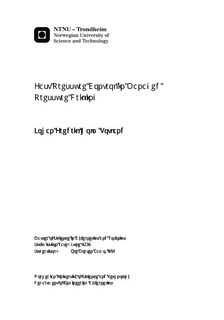Fast Pressure Control in Managed Pressure Drilling
Master thesis
Permanent lenke
http://hdl.handle.net/11250/261386Utgivelsesdato
2014Metadata
Vis full innførselSamlinger
Sammendrag
In drilling operations, it is of great importance to efficiently and safely control the pressure in the well. To avoid possible damage to the reservoir, equipment, personnel and the environment, the pressure in the well bore must be kept within certain limits, determined by the formations around the well. An emerging drilling technique, intended to increase the efficiency and safety of drilling operations, is known as Managed Pressure Drilling (MPD). MPD differs from conventional drilling by closing the mud system with a controlled choke, often in combination with a backpressure pump to ensure circulation through the choke. The controller objective is to automatically adjust the choke to reach the desired downhole pressure. For optimal control of the downhole pressure, a model describing the flows and pressures in the well is necessary. A modal discretization method is considered and implemented in this thesis, resulting in a rational approximation of a two-dimensional distributed parameter model. The discretized model is used to design a LQG controller, for comparison with a PI controller. Both controllers are implemented in MATLAB to perform computer simulations and experiments in lab. Simulations indicated that the transient response of the LQG stabilized at the desired set-point, more efficiently relative to PI controller. This difference was significantly improved when increasing the length of the simulated well. In experiments performed on a tailor made experimental lab located at NTNU, the performance of the two controllers were about equally great. It is discussed whether the lab is inadequate to demonstrate possible improvements due to the introduction of the two-dimensional model.
